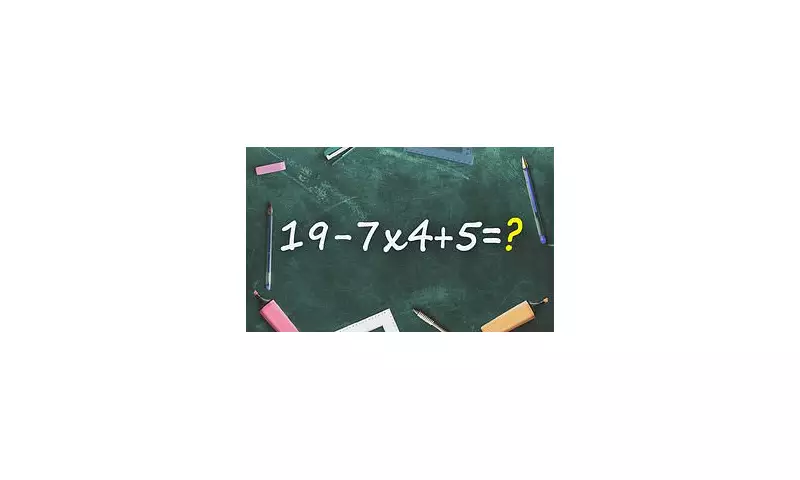
A seemingly straightforward maths problem has taken the internet by storm, leaving a trail of confusion and fierce debate in its wake. The equation, which appears deceptively simple, has proven to be a formidable test of basic arithmetic rules, with countless users arriving at the wrong answer.
The Viral Equation That Caused Chaos
Posted on Friday by X user @BholanathDutta, the brain teaser presents a short sequence: 19-7x4+5. At first glance, it looks like a throwback to school algebra lessons, but this innocent façade quickly crumbles. The puzzle demands a surprising amount of brainpower, sparking an online frenzy as commenters competed to outsmart one another with conflicting solutions.
The core of the problem lies in the symbols: subtraction, multiplication, and addition. While many attempted to solve the equation from left to right, this approach led to a critical and widespread error. The internet was sharply divided, with a significant number of users adamantly convinced the answer was 53.
Cracking the Code with PEMDAS
The key to unlocking the puzzle is remembering the standard order of operations, often memorised by the acronym PEMDAS (Parentheses, Exponents, Multiplication, Division, Addition, Subtraction). Think of it as your mathematical GPS; following it precisely ensures you reach the correct destination.
Since there are no parentheses or exponents in this equation, the first operation to tackle is multiplication. This is the step that changes everything. Focusing on the 7x4 part of the equation gives you 28.
This simplifies the equation to 19 - 28 + 5. Here is where another common mistake occurs. According to PEMDAS, addition and subtraction hold equal priority, so you must process them from left to right. Therefore, you calculate 19 - 28 first, which equals -9. Then, you add 5 to this result, giving you the final answer: -4.
Why So Many People Got It Wrong
The individuals who arrived at 53 made an understandable misstep. They treated the equation like reading a book, solving it strictly from left to right: 19 minus 7 equals 12, then 12 multiplied by 4 equals 48, and finally 48 plus 5 equals 53. However, this ignores the fundamental mathematical rule that multiplication takes precedence over addition and subtraction.
This viral puzzle serves as a potent reminder that even the most basic-looking equations require a disciplined approach. If you landed on -4, give yourself a pat on the back—your maths teacher would be proud. If not, consider it a fun opportunity to brush up on those essential PEMDAS rules we all learned in school.





